Plastic-sustainability – China-textile 09-11-2022 - Arhive
Plastic-sustainability – China-textile
Crude Oil Prices Trend
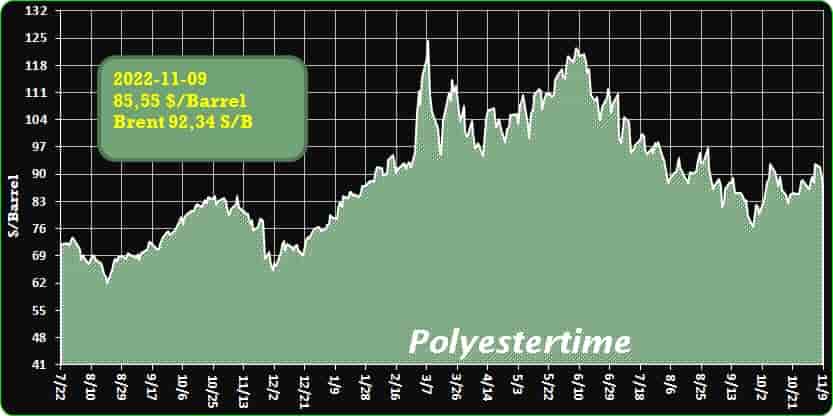
Crude Oil Prices Trend Polyestertime
-Stora Enso’s pilot plant for a breakthrough bioplastic is well underway. What will happen next?
The launch of a new bioplastics pilot plant in the Flanders region in Belgium will enable a new bioplastics production technology, ready for implementation at industrial scale.
In the decades to come, bio-based materials will be standard components of various packaging solutions. As a response to this demand, In December 2019, Stora Enso announced an investment of EUR 9 million to build a pilot facility enabling the production of bioplastics. The objective is to test FuraCore®, Stora Enso’s breakthrough technology to produce furandicarboxylic acid (FDCA), a major building block of bioplastic PEF (PolyEthylene Furanoate).
From pilot production in 2022 towards commercialisation in 2026
Since the initial investment announcement, things have advanced at a rapid pace. Construction of the plant has been completed, and the commissioning is well underway. Initial production will start by year-end 2022, and, after that, things will quickly move towards regular production of FDCA, and PEF with partners.
According to VP Emerging Business, Dirk den Ouden, the next step is to ensure everything runs in a stable way and to collect data for the next scale-up. Once samples are available in large enough quantities, Stora Enso will work with partners and potential customers on validating the FuraCore® products in a range of applications.
– We’ll soon have our pilot fully up and running, producing material for testing, says den Ouden. The proof point of years of breakthrough R&D is now around the corner.
The bigger picture of the piloting effort is to validate the chemical process and provide sample material to gain further insight into market needs and product demands. The pilot facility will initially use industrially available sugar (fructose) to produce high-value chemicals and materials for application testing.
In the future, the intention is to run the process on sugars extracted from wood and other non-food-based biomass. Plastic-sustainability – China-textile
– Nature happens to provide our raw material in a very efficient way via crops. That’s where we’ll start. Implementing FuraCore® chemistry at large scale globally, however, requires us to rethink our raw material sourcing. That’s where sugars from trees and agricultural residues come in.
The Flanders region as a hub for bio-based technologies
With the Flanders region having become a focal point for the bio-based economy, it would be an ideal region to industrialize the FuraCore® process. The central location of the pilot facility at the Langerbrugge recycled paper mill near Ghent brings access to skilled people and critical service providers in the region. At just an hour from Brussels, it makes partner visits easy to arrange.
The journey of developing a plastic that makes sense is in full swing.
– Come and join us, Den Ouden concludes, and be part of a renewable packaging revolution.
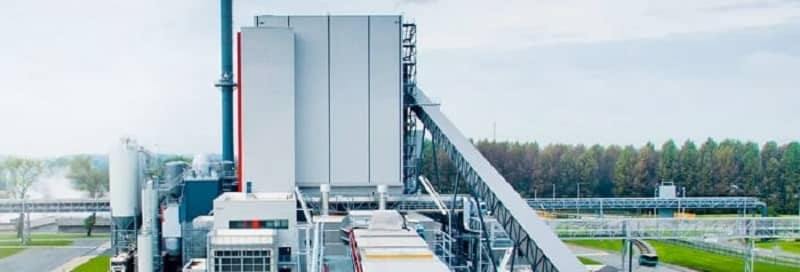
-China’s textile sector logs growth in first 9 months
China’s textile industry posted stable revenue growth in the first three quarters of the year, official data showed.
Textile companies with an annual main business revenue of at least 20 million yuan (about 2.76 million U.S. dollars) raked in 3.86 trillion yuan in revenue in the period, up 3.1 percent year on year, according to the Ministry of Industry and Information Technology.
The total value-added output of these companies went down 0.4 percent year on year during the period. Plastic-sustainability – China-textile
The combined sales of main retailers amounted to 12.38 trillion yuan in the January-September period, up 3 percent from a year earlier.
The country’s textile and garment exports totaled 248.4 billion U.S. dollars in the same period, an increase of 9.1 percent year on year.
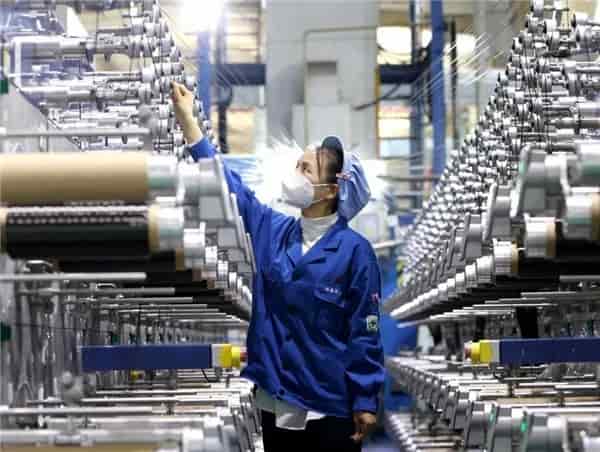
-Plastic Packaging May Not Be So Bad, After All
McKinsey & Co. conducts a lifecycle analysis of plastic packaging versus alternative materials for a number of applications and finds that the majority of plastic packages offer fewer GHGs.
Amidst the ongoing demonization of single-use plastic packaging, global consulting firm McKinsey & Co.has published a thought-provoking report on the “Climate Impacts of Plastics,” and the conclusions may surprise you. When examining the total greenhouse gas (GHG) contribution of plastics versus its alternatives, including product lifecycle (cradle to grave) and impact of use, it found that among those applications for which non-plastic alternatives are used at scale, the plastics examined in the report offer a lower total greenhouse gas GHG contribution compared with alternatives in 13 of 14 cases, including both direct and indirect value-chain emissions. These GHG savings ranged from 10% to 90%, considering both product lifecycle and impact of use.
Furthermore, the report noted, when indirect impacts were excluded, such as lower food spoilage in the case of food packaging, and only direct lifecycle emissions, including production, retail transport, and end-of-life disposition, were considered, plastics had the lowest GHG impact in nine of the 14 applications. Plastic-sustainability – China-textile
“Plastics are ubiquitous across the global economy and the subject of frequent debate, from their impact on marine pollution to their recyclability,” says McKinsey. “However, their role in enhancing use efficiencies, such as decreasing food spoilage and reducing greenhouse gas emissions, is often overlooked. Rather, plastics are frequently maligned across topics such as leakage to the environment, toxicity, use of resources, production emissions, and ocean pollution. Although these important considerations need to be addressed, an opportunity exists for a more balanced, science-based perspective on plastics versus alternative materials.”
The 30-page document includes information on the markets selected—packaging, building and construction, automotive, textiles, and consumer durables, which represent around 90% of plastics volume—the methodology used, and in-depth details on several of the applications studied. McKinsey’s analysis was based on the U.S. market in 2020, with additional sensitivities to illustrate the impact in other regions and how results will change as the global environment moves toward a “decarbonized world” in 2050.
Among the findings of the report related to packaging in the U.S.:
- When high-density polyethylene grocery bags are compared with the next-best alternative, paper bags, HDPE packaging is found to have 80% fewer total GHGs.
- Wet pet-food packaging in PET and polypropylene versus aluminum or steel packaging has 70% fewer emissions.
- PET soft drink containers emit 50% fewer GHGs than aluminum bottles.
- Fresh meat packaging made from expanded polystyrene or polyvinyl chloride has a 35% smaller GHG footprint compared to fresh meat packaging made from paper.
- When compared with glass soap containers, HDPE soap containers have 15% fewer GHGs. Plastic-sustainability – China-textile
- Industrial drums made of HDPE emit 30% more GHGs than those made from steel.
- When comparing plastics versus plastics-enabled mixed materials, McKinsey found that HDPE milk containers have 5% greater GHG emissions than paper, while the GHG emissions of EPS water cups and paper cups are on par.
One of the applications chosen for a deep-dive analysis in the report is soft drink containers. McKinsey explains that it based its analysis on a comparison of 20-oz PET bottles with 12-oz aluminum cans and 12-oz glass bottles, selected because they represent the most common beverage container sizes for their respective material substrates. According to the LCA, PET bottles have the lowest emissions of all the materials, due to their lightweight properties and the low amount of energy required to produce them. “By contrast, aluminum cans have two times the emissions of PET bottles, and emissions from glass bottles are three times higher,” shares the report.
While the PET bottle has the lowest production emissions, the lifecycle analysis found that it has the least favorable GHG emissions for its end-of-life disposition. “PET has the lowest recycling rate and credits from avoided virgin production among the three materials. It also has the highest emissions from waste-to-energy. PET releases CO2 when burned, whereas aluminum and glass do not,” explains the report. “However, the GHG impact of production emissions is more significant than end-of-life disposition emissions, resulting in PET having the lowest GHG impact.”
In its study, McKinsey also found that the indirect value-chain impacts of plastics can be quite substantial, particularly in the case of plastic used in food packaging. “There are few at-scale alternatives to plastic in food packaging across a broad range of applications, driven primarily by reduced food spoilage when using plastics,” says the report.
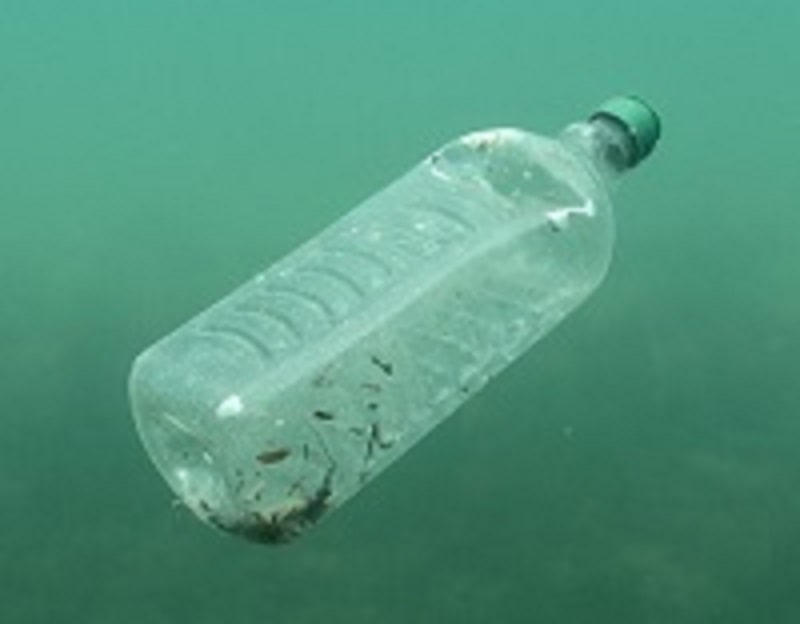
-Association of Plastics Recyclers Recognizes Cavitated PE Technology
Void Technologies’ VO+ PE Masterbatch Technology Achieves Critical Guidance Recognition
Void Technologies announced it has received Critical Guidance recognition from the APR for its proprietary process to create low density cavitated films, confirming its compatibility with PE film recycling in the US.
The VO+ technology creates micro and nano-scale air pockets in plastic, creating a film with a reduced environmental footprint. Plastic-sustainability – China-textile
VO+ films are produced by blending the masterbatch with PE as part of the film extrusion process. The orientation process causes the VO+ additives to separate from the primary polymer to create a non-breathable voided structure. The combination of MDO and cavitation leads to improved film performance including puncture resistance, toughness, and high opacity.
PE films produced using Void’s new process offer a 35% material savings from density reduction and down-gauging. Plastic-sustainability – China-textile
The APR recognition comes after laboratory testing confirmed that the technology is compatible with current, industrial-scale, film to film recycling processes. Thanks to the low density of VO+ PE films, they will float in separation systems. During the recycling process, VO+ films will turn from white to clear and will retain similar properties to recycled PE resins.
Void’s VO+ PE masterbatch technology was developed for use in a range of applications such as laminates, frozen food, wicketed bags, and flow wraps for confectionery.
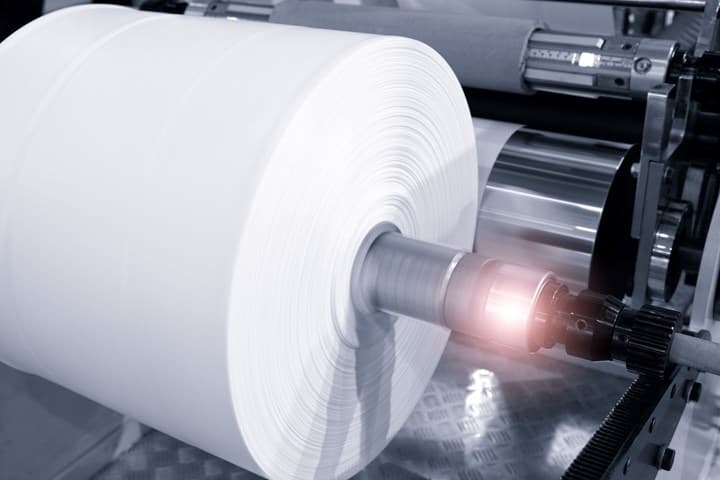
-KHS integrates preferential heating into InnoPET Blomax Series V
Complex container shapes produced efficiently
KHS integrates optimized preferential heating module into InnoPET Blomax Series V (KHS)
Dortmund machine and systems manufacturer KHS has integrated preferential heating into its latest generation of stretch blow molders, the KHS InnoPET Blomax Series V, to shape containers more efficiently.
For years, it seemed practically impossible to make oval pet bottles with any great degree of precision. The big challenge was to homogeneously distribute the material throughout the irregularly formed plastic container. The breakthrough ultimately came with the introduction of sophisticated preferential heating technology. Henceforth, it was possible to produce complex container shapes of an optimum weight with the help of pet stretch blow molding machines. KHS has used this energy-efficient process in its systems since 1997.
Developed in the early 1970s, the pet bottle very quickly embarked on a remarkable march of triumph across the globe. Its lightweight and excellent barrier properties make the plastic container the ideal form of packaging for products found in everyday use. It is thus no surprise that in the beverage and food industries and home and personal care sector the pet bottle is one of the most popular packaging options. Plastic receptacles also offer clear added value at the point of sale: as they can be easily formed when heated, these containers can now be made in practically any shape, whether this is round, oval, or rectangular. Plastic-sustainability – China-textile
However, more complex bottle bodies make especially high demands on the production process. The even distribution of the plastic material in particular is a challenging task that tests conventional stretch blow molders to their limits. This heat preforms evenly so that on non-round containers the areas that first come into contact with the blow mold, cool down sooner. The result is that the pet hardens at these points faster and the material is distributed unevenly. Only the use of a specially developed heating system known as preferential heating also enables the wall thickness of pet bottles with more complex shapes to be radially distributed with any precision – and thus bottles with an optimized weight to be produced.
Maximum precision
KHS has used the energy-efficient preferential heating method on its InnoPET Blomax stretch blow molder series since 1997. The preform is first heated in the standard heater where the container constantly rotates to ensure that it is evenly heated. This rotation is deliberately interrupted in the downstream preferential heating module so that only certain areas of the PET preform continue to be actively heated from two sides. The distance of the preforms to one another is kept as small as possible, thus significantly lowering the machine’s energy consumption. This is also assisted by KHS’ highly efficient NIR heating system. The precise alignment of the heating profile also yields higher quality.
Due to preferential heating, the pet material is evenly distributed in the container wall across the oval cross-section. This process ensures that wall thicknesses are identical and is thus largely instrumental in securing the stability and quality of the container. At the same time, users save significant amounts of plastic, for without preferential heating the uneven distribution of materials would have to be compensated for by increasing the wall thickness. In the final process step the bottle is optionally aligned by its shape and fed into the conveying system.
KHS first used the preferential heating method in its InnoPET Blomax Series II, with the procedure also available for successor models Series III and Series IV. Around 60 machines are currently on the market, with most of them in Europe and North America. Customers primarily include companies in the home and personal care sector who manufacture products such as laundry and dishwashing detergents, soaps, shower gels and shampoos. This special heating method is also used in the manufacture of containers for liquid foods such as ketchup, honey, mustard and oil. Converters are another example of businesses who trust in this KHS technology. Plastic-sustainability – China-textile
Henkel relies on preferential heating by KHS
German consumer goods manufacturer Henkel most recently invested in a KHS stretch blow molder with preferential heating for its Fa body care brand. Further machines are being used by the company around the world to produce fabric softeners and household detergents. This investment has allowed Henkel to optimize its production processes, with the company now manufacturing pet containers cost-effectively in house. This makes production plans more flexible. At the same time, fewer resources are used as trucks no longer have to travel lengthy distances.
The joint cooperation is a showcase project – particularly when it comes to sustainability and the use of resources. The customer’s 250-milliliter bottle, for instance, now consumes 14% less material than the previous versions while maintaining the required bottle quality. The bottles also consist of 100% recycled pet.
Blow molding technology
The team of experts at KHS is currently further developing the preferential heating module so that it is compatible with its latest generation of stretch blow molders, the InnoPET Blomax Series V. Here, the module is integrated into the usual heater as standard. The aim is to keep the heater box the same and that only the length of the full heater changes in relation to capacity. Standardizing this feature considerably reduces the range of parts needed and makes maintenance and inspection much easier. Delivery times for the machine and its components are also shorter as a result of these optimizations. In addition, the system is more flexible as it can now process both round and oval containers as an optional function.
Improved energy balance
Furthermore, the KHS team has upped the performance to a maximum 2,000 bottles per station and hour. The number of stations ranges from six to 16, with the total output thus at between 12,000 and 32,000 bottles an hour.
The bottle discharge has been optimized: here, the pet bottles are transported by their necks by special grippers. Oriented bottle guiding not only prevents the containers from catching but also boosts production efficiency. During planning the KHS experts deliberately omitted to include format parts that have to be changed over according to the container shape.
Finally, those responsible for the project have further improved the energy efficiency of the new system. It now yields similar energy savings to the standard version of the InnoPET Blomax Series V over the predecessor model, with the optimized heating technology causing up to 40% less energy to be consumed.
The Covid-19 pandemic led to the country-wide lockdown on 25 March 2020. It will be two years tomorrow as I write this. What have we learned in this time? Maybe the meaning of resilience since small companies like us have had to rely on our resources and the forbearance of our employees as we have struggled to produce our trade platforms.
The print and packaging industries have been fortunate, although the commercial printing industry is still to recover. We have learned more about the digital transformation that affects commercial printing and packaging. Ultimately digital will help print grow in a country where we are still far behind in our paper and print consumption and where digital is a leapfrog technology that will only increase the demand for print in the foreseeable future.
Web analytics show that we now have readership in North America and Europe amongst the 90 countries where our five platforms reach. Our traffic which more than doubled in 2020, has at times gone up by another 50% in 2021. And advertising which had fallen to pieces in 2020 and 2021, has started its return since January 2022.
As the economy approaches real growth with unevenness and shortages a given, we are looking forward to the PrintPack India exhibition in Greater Noida. We are again appointed to produce the Show Daily on all five days of the show from 26 to 30 May 2022.
It is the right time to support our high-impact reporting and authoritative and technical information with some of the best correspondents in the industry.
Readers can power Packaging South Asia’s balanced industry journalism and help sustain us by subscribing. Plastic-sustainability – China-textile
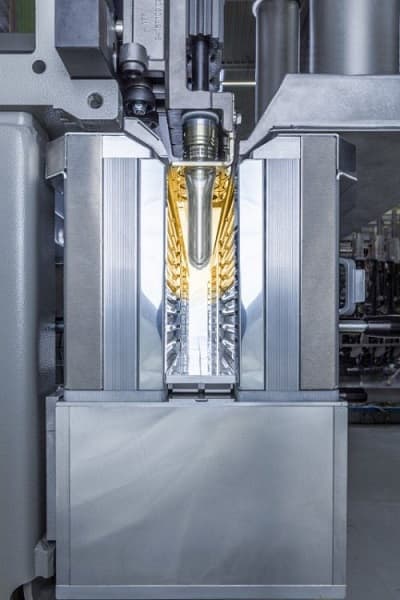
-EU: 4.8 tonnes of waste generated per inhabitant
In 2020, the total waste generated in the EU by all economic activities and households amounted to 2,151 million tonnes or 4,808 kilograms per capita.
In the EU, construction contributed 37.1 % of the total in 2020 and was followed by mining and quarrying (23.4 %), manufacturing (10.9 %), waste and water services (10.7 %), and households (9.5 %). The remaining 8.4 % was waste generated from other economic activities, mainly services (4.5 %) and energy (2.3 %).
A lot of the waste from mining and quarrying and from construction and demolition is classified as major mineral waste. Almost two thirds (64 % or 3.1 tonnes per inhabitant) of the total waste generated in the EU in 2020 was major mineral waste. The relative share of major mineral waste in the total waste generated varied considerably between EU Member States, which may reflect, at least to some degree, different economic structures. In general, those EU Member States that had higher shares of major mineral waste were those that were characterised as having relatively sizeable mining and quarrying activities, such as Finland, Sweden, and Bulgaria, and/or construction and demolition activities, such as Luxembourg. In these member states, major mineral waste accounted for between 84 % and 89 % of all waste generated. Plastic-sustainability – China-textile
Waste generation, excluding major mineral waste
In the EU, 781 million tonnes of waste excluding major mineral waste were generated in 2020, equivalent to 36 % of the total waste generated. When expressed in relation to population size, the EU generated, on average, 1.7 tonnes per inhabitant in 2020, excluding major mineral waste.
Across the EU Member States, waste generation excluding major mineral waste ranged from an average of 6.3 tonnes per inhabitant in Estonia to less than one tonne per inhabitant in Romania and Malta in 2020. The large quantity of waste generated in Estonia is related to energy production based on oil shale.
In 2020, the highest levels of waste generation were recorded for waste and water services (211 million tonnes), for households (196 million tonnes) and manufacturing activities (171 million tonnes). Plastic-sustainability – China-textile
Their developments followed different patterns over time: between 2004 and 2020, waste generation (excluding major mineral waste) by waste and water services and households increased by 180.4 % and 12.5 %, respectively, while generation by manufacturing activities diminished quite considerably, down by 28.8 %.
Hazardous waste generation
Hazardous waste may pose an elevated risk to human health and to the environment if not managed and disposed of safely. Among the waste generated in the EU in 2020, 95.5 million tonnes (4.4 % of the total) were classified as hazardous waste.
Compared with 2010, 5.1 % more hazardous waste was generated in 2020 in the EU. This is an increase in quantity terms from 90.8 to 95.5 million tonnes with a peak of 101.7 million tonnes in 2018. The decline in 2020 compared to 2018 results mainly from less combustion wastes due to less incineration of solid fuels such as coal, coke, and oil shale. In 2020, the share of hazardous waste in total waste generation was between 0.5 % in Romania and 12.0 % in Bulgaria. Among the non-member countries shown in Figure 4, Turkey recorded the highest share of hazardous waste in total waste generation (28.5 %) and was followed by North Macedonia (28.2 %). Montenegro (27.6 %), Serbia (19.3 %) and Norway (13.3 %). Plastic-sustainability – China-textile
Waste treatment
In 2020, some 2,029 million tonnes of waste were treated in the EU. This does not include exported waste, but includes the treatment of waste imported into the EU. The reported amounts are therefore not directly comparable with those for waste generation.
The quantity of waste recycled, used for backfilling, or incinerated with energy recovery grew by 40.3 % from 870 million tonnes in 2004 to 1 221 million tonnes in 2020; as a result, the share of such recovery in total waste treatment rose from 45.9 % in 2004 to 60.2 % in 2020. The quantity of waste subject to disposal decreased from 1,027 million tonnes in 2004 to 808 million tonnes in 2020, which was a decrease of 21.3 %. The share of disposal in total waste treatment decreased from 54.1 % in 2004 to 39.8 % in 2020.
As stated above, in the EU in 2020, more than a half (60.2 %) of the waste was treated in recovery operations: recycling (39.2 % of the total treated waste), backfilling (14.6 %) or energy recovery (6.4 %). The remaining 39.8 % was either landfilled (31.3 %), incinerated without energy recovery (0.5 %) or disposed of otherwise (8.1 %). Significant differences could be observed among the EU Member States regarding the use they made of these various treatment methods. For instance, some Member States had very high recycling rates (Italy, Belgium, Slovakia and Latvia), in others landfill is the prevailing treatment category (Romania, Bulgaria, Finland, Sweden and Greece, see Figure 6).
Hazardous waste treatment
In total, 74.3 million tonnes of hazardous waste were treated in the EU in 2020, with more than two thirds of this treated in just four EU Member States, Germany (21.4 million tonnes or 28.5 % of EU total), Bulgaria (13.8 million tonnes or 18.4 %), and France (8.2 million tonnes or 10.9 %) and Sweden (7.0 million tonnes or 9.3 %).
In 2020, 46.8 % of the hazardous waste treated in the EU was recovered: 38.5 % by recycling or backfilling (equivalent to 64 kg per inhabitant) and 8.3 % by energy recovery (14 kg per inhabitant), see Figure 8. The remaining 53.2 % were incinerated without energy recovery (5.9 % or 9.7 kg per inhabitant), landfilled, in other words deposited into or onto land or through land treatment(22.0 % or 36.5 kg per inhabitant) or disposed of by other way (25.3 % or 42.5 kg per inhabitant). Plastic-sustainability – China-textile
Source: Eurostat
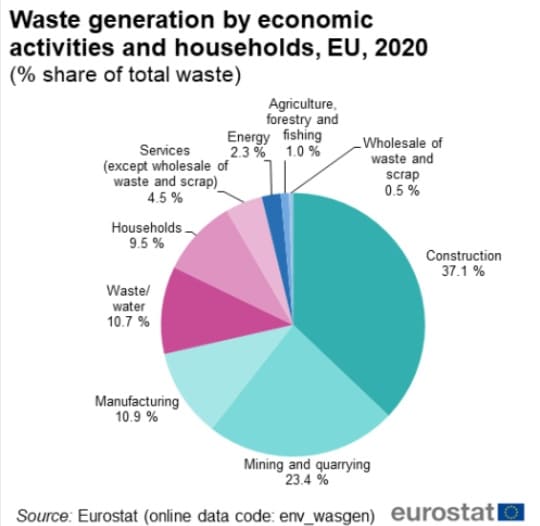
-Big brands set to miss plastic sustainability targets
Some of the world’s biggest consumer goods companies, including PepsiCo, Mars and Nestle, are almost certain to miss a target to make plastic packaging more sustainable by 2025, according Reuters.
The study by the Ellen MacArthur Foundation and the United Nations Environment Program also revealed that some companies – including Coca-Cola and Pepsi – are using more virgin plastic despite a pledge to reduce its use.
The report comes as U.N. members are due to meet in Uruguay this month to start negotiations on the first ever global plastics treaty, which is aimed at reining in soaring waste pollution choking marine life and contaminating food.
Some U.N. members are pushing for a pact that includes legally binding targets to increase recycled content in packaging and use less petroleum-derived virgin plastic, rules that would have financial implications for the consumer goods and petrochemical industries. Plastic-sustainability – China-textile
Dozens of major brands have in recent years set targets to increase plastic recycling and reduce the use of single-use packaging in partnership with the Ellen MacAurthur Foundation, as part of efforts to burnish their green credentials.
The headline pledge was that 100% of plastic packaging would be reusable, recyclable or compostable by 2025, but this goal will “almost certainly be missed by most organizations”, the environmental group’s report said.
Nestle said these targets were hampered by a lack of government recycling infrastructure globally, noting that it had reduced the amount of virgin plastic it uses by 8% since 2018.
Mars said it is making progress in tackling plastic waste and investing hundreds of millions of dollars to redesign thousands of packaging components. Pepsi and Coca-Cola did not respond to requests for comment.
Greenpeace said the report is evidence that voluntary corporate targets have failed and called on the U.N. to forge a treaty that forces governments and companies to use less single-use plastic packaging.
“This underlines the need for governments to ensure that the global plastic treaty … delivers major reductions in plastic production and use,” said Graham Forbes, Greenpeace’s USA Global Plastics Project Leader.

-November contract price of ethylene in Europe increased by EUR35 per ton
The contract price of ethylene for November delivery in Europe has been agreed at EUR1,295 per tonne, eur35 per tonne more than in October,ICIS said.
The contract price was approved on the terms of FD NWE (with delivery to North-West Europe).
Three producers and two consumers directly confirmed this price level.
The cost of naphtha on average in October was higher than in September. The cost of natural gas has been significantly lower due to unusually high temperatures in Europe.
Demand remains low, but at the same time the level of utilization of many enterprises is reduced, and the residues of the material are under control.
The base contract price is considered to be fully established when it is directly confirmed by at least two producers and two consumers. Plastic-sustainability – China-textile
Earlierit was reported that the contract price of ethylene in Europe for October deliveries was agreed at the level of EUR1,260 per ton, which is EUR45 per ton lower than the level of the previous month.

Plastic-sustainability – China-textile
